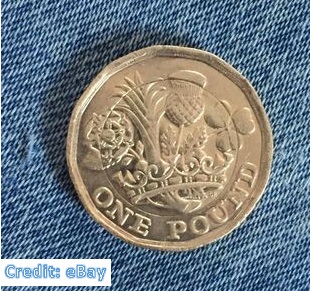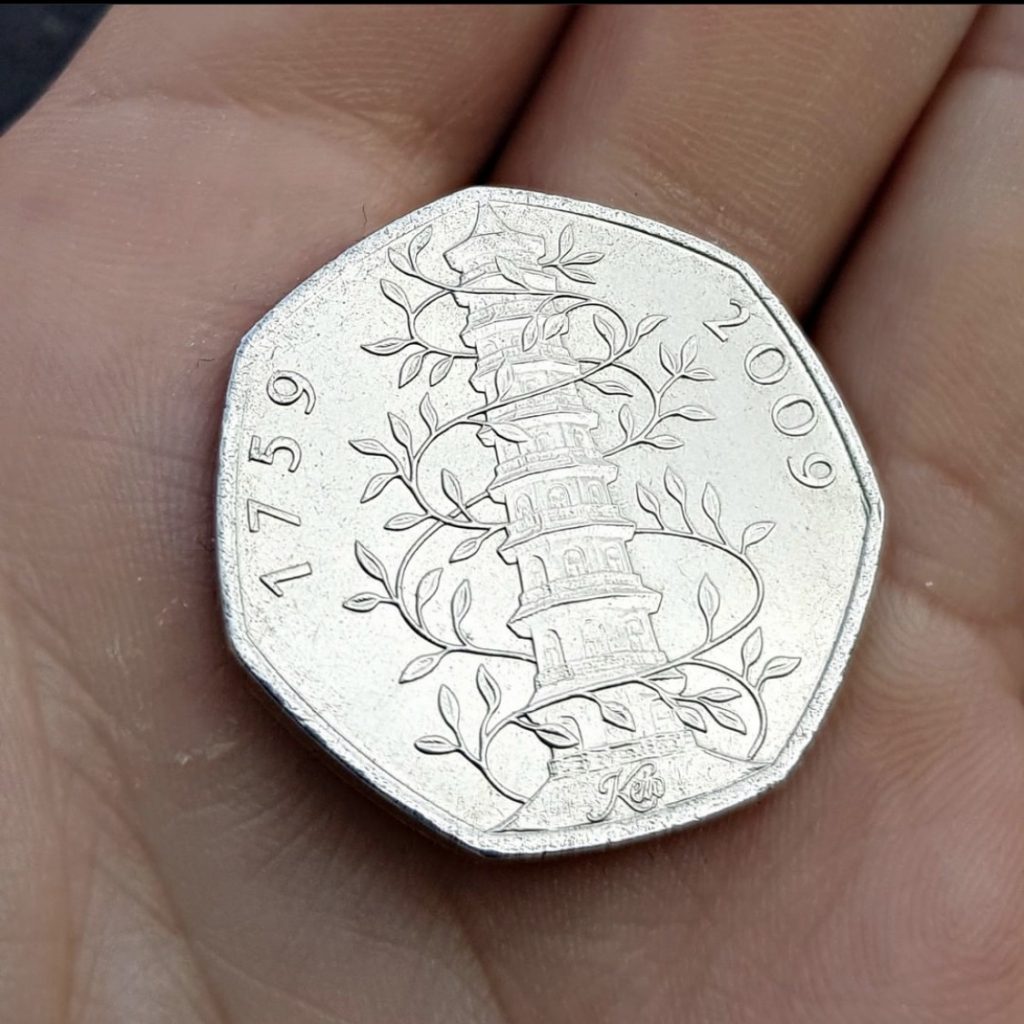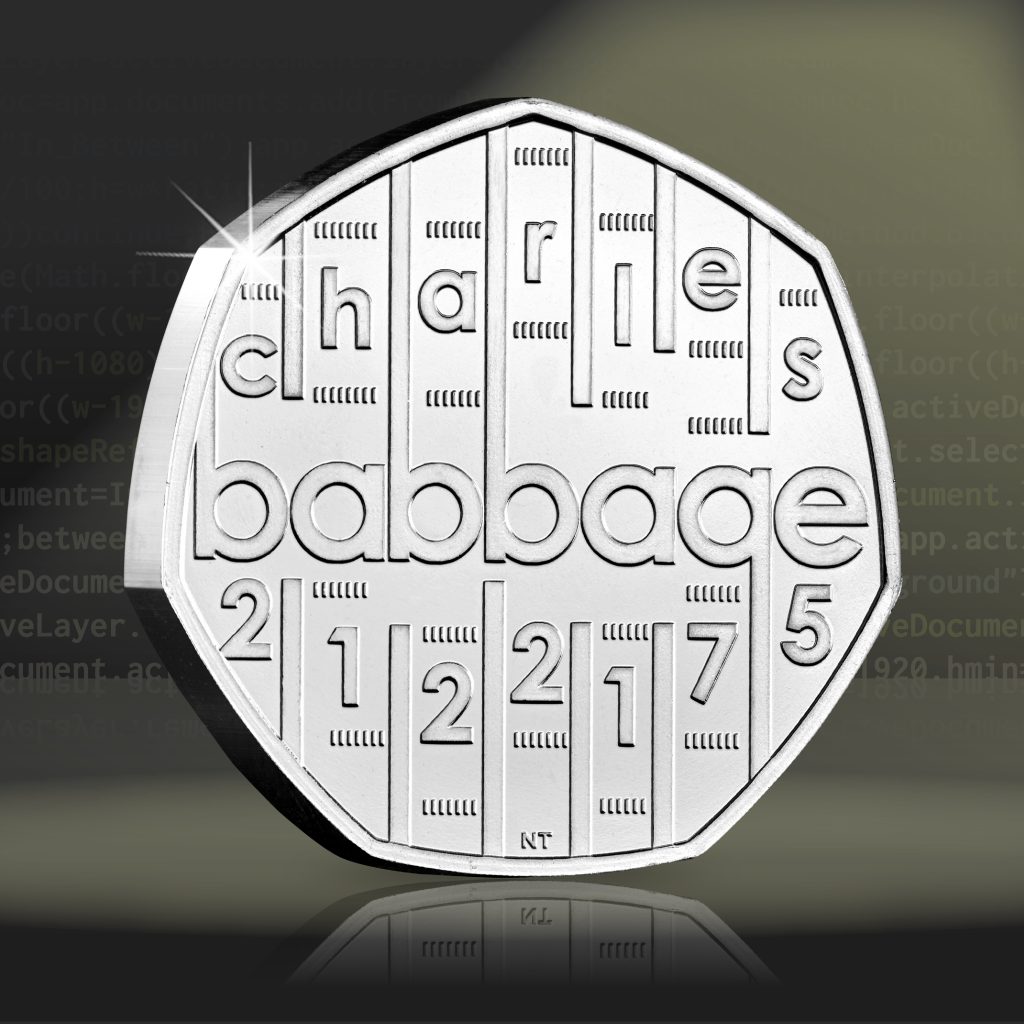Coin News
Is your £1 coin worth £200?
Finding an error coin is like winning the lottery for collectors. And after reading today’s blog, you’ll be adding another rare error to your Change Checker watch list!
As earlier this month, a pub worker discovered a £1 coin that was minted from just ONE metal – not two – which went on to sell for £205 on the secondary market!
You see, normal £1 coins have a gold coloured Nickel-Brass outer ring and a silver coloured Nickel plated interior, but this rarity was completely gold-coloured. Check it out in the image below…

Understandably this lucky find was immediately added to eBay and the uniqueness of the coin meant there were 24 bids from five interested bidders, before it eventually sold on August 8 for the unbelievable price of £205!
Mad, right?
One explanation for the supposed ‘error’ could be that the coin missed the plating stage during production.
Whilst this is the first time we’ve heard of the ‘error’ being found on a £1 coin, similar stories have been reported on £2 coins before…
The Holy Grail of Bi-metallic Errors

The image above shows what has been described as the Holy Grail of bimetallic ‘errors’ and is the result of the nickel-brass £2 blank not having the inner core section punched out before being struck.
This means that the £2 coin is made from one full piece of nickel-brass, just like the £1 error above – completely contrasting the very idea of a bimetallic coin.
A 2007 monometallic £2 was verified by The Royal Mint and in the email confirming the mis-strike it was mentioned that they had only seen 4-5 similar coins before.
This rare striking error is highly sought after and coins have achieved extraordinary prices in private sales and auctions.
So if you don’t consider yourself a Change Checker, it might be time to rethink as these exceptional error coins could be lying unused at the bottom of your bag.
Have you ever discover an error coin? If so comment below as we’d love to hear all about your coin hunting experiences!
If you’re interested in coin collecting, our Change Checker web app is completely free to use and allows users to:
– Find and identify the coins in their pocket
– Collect and track the coins they have
– Swap their spare coins with other Change Checkers

Sign up today at: www.changechecker.org/app
Rare Trial Pieces including Kew Gardens 50p to be Auctioned for the First Time Ever!
Have you heard the news that for the first time in its history, The Royal Mint plan to auction rare sample coins for collectors?
Trial pieces are some of the very first samples of a new coin to be struck. They are used to set the standard for each coin issued and are carefully inspected by coin makers to ensure they meet the correct standards before striking of the new design begins.
Trial Coins Put Up For Auction
Rebecca Morgan, director of collector services at the Royal Mint, said: “This month we are delighted to offer a sample of our trial pieces at auction for the first time. Each of the trial pieces has played an integral role in creating the final coin, and offer collectors the chance to own a part of numismatic history.”
The Royal Mint have announced that collectors will have the chance to get their hands on a number of trail pieces at auction on Sunday 26th September.
Included in the auction are the coveted Kew Gardens 50p (the UK’s rarest circulation coin) and the Three Graces (a collection that sold out in 25 minutes last December).
Rare Kew Gardens 50p

Considered the ‘holy grail’ of change collecting, the Kew Gardens 50p tops the Change Checker Scarcity Index time and again. In fact, this coin is so sought-after that collectors are willing to pay well over face value to get their hands on one, with our latest eBay Tracker revealing the coin currently selling for £157 on the secondary market!
However, we always urge buyer caution when purchasing a Kew Gardens 50p, as there are a number of fakes out there to be aware of. Find out how you can spot the fake Kew Gardens 50ps here.
1994 Mayflower £2 Trail Piece

Rare trial pieces have been seen before, often becoming very sought-after amongst collectors…
In 1994, ahead of the introduction of the UK’s first bi-metallic coin – the £2 – The Royal Mint created a trial piece. This was used by The Royal Mint to test the minting process of the new coin and to help the automatic vending industry re-calibrate their machines in preparation.
The trialled reverse design features a three-masted sailing ship. Although the ship is not named, it is likely to be the Mayflower, which set sail from Plymouth to America to establish the first permanent New-England colony. The outer ring bears the inscription Royal Mint Trial with the date, 1994.
There were just over 4,500 packs of this trial £2 issued and as the coin design was never released into circulation, it has become an incredibly rare example of a bi-metallic £2 coin.
If you own one of these £2 trial pieces you can consider yourself very lucky!
But with the upcoming auction set for the 26th September, we’re sure collectors will be excited at the chance of getting their hands on the trial piece coins offered by The Royal Mint, including that sought-after Kew Gardens 50p which we’re sure will be incredibly popular.
Receive new UK coins without the hassle of placing orders on the day of release!
Join the Change Checker UK CERTIFIED BU Subscription Service and receive new UK coins sent to your door without the hassle of placing orders on the day of release!
Don’t miss your chance to get ahead of the crowd and be one of the very first collectors to receive the latest UK new issue coins as soon as possible after their release.
Computer pioneer, Charles Babbage, celebrated on an Innovation in Science 50p…
Charles Babbage was an English mathematician and inventor who originated the concept of a digital programmable computer. He is even considered by some the ‘father of the computer’!
In 2021, the year marking 150 years since his passing, The Royal Mint issued a UK 50p as part of their Innovation in Science series.
2021 UK Charles Babbage 50p
The reverse of the Charles Babbage 50p was created by Nigel Tudman and Jas Bhamra, and features a design honouring Babbage’s legacy, linking his machinery to the digital age. They used a combination of traditional minting skills and modern technology to create the striking design.
The Pioneer of Computing

Boasting an impressive career in calculus, astronomy, and arithmetics , Charles Babbage held the title of Lucasian Professor of Mathematics at Cambridge University.
The 1820s saw Babbage’s development of his ‘Difference Engine’, which was a machine that could perform mathematical calculations. Initially constructed as a six-wheeled model, it was later developed into a bigger, better, and more complex machine – Difference Engine 2.
However, his fame as a computer pioneer largely came from his invention, the Analytical Engine. It could perform any arithmetical calculation using punched cards, as well as a memory unit to store numbers – the fundamental components of today’s computers.
Babbage’s ideas were well ahead of their time, making him a perfect addition to The Royal Mint’s Innovation in Science series.
The Innovation in Science Series
This exciting series kick-started back in 2019 with the issue of the Stephen Hawking 50p.
2019 Stephen Hawking 50p
In 2019, less than a year since his death, The Royal Mint released a Stephen Hawking 50p coin, honouring his works as one of the most influential physicists of the modern age.
He became the very first person to be celebrated in The Royal Mint’s Innovators in Science series and only the third person to be commemorated on a coin within a year of their death (the others being Winston Churchill and the Queen Mother!)
The reverse of the coin, designed by Edwina Ellis, features a stylised black hole and the inscription ‘Stephen Hawking’ . It also shows the Bekenstein-Hawking formula, which describes the thermodynamic entropy of a black hole!
2020 Rosalind Franklin 50p
In the year that would have marked her 100th birthday, The Royal Mint released a 50p celebrating the life and crucial work of Rosalind Franklin, the first female scientist to be commemorated on a UK coin.
David Knapton’s striking design of this coin, features a depiction of Rosalind Franklin’s X-ray, ‘Photograph 51’, which revealed the helical structure of DNA, in her laboratory at King’s College, London.
One of Britain’s greatest scientists, Franklin made a crucial finding to the discovery of the double-helix structure of DNA.
2021 John Logie Baird 50p
It’s hard to imagine life without television but back in the early 1920s, it was a complete unknown.
That was until John Logie Baird successfully produced televised objects in outline in 1924, transmitted recognisable human faces in 1925, and demonstrated the televising of moving objects in 1926.
Issued in 2021, to celebrate the life and works of the ‘Father of Television’, the design of this 50p coin features key milestones from Baird’s life, presented between the lines of transmission radiating from the centre of the coin.
Do you have any of the Innovation in Science coins in your collection? Let us know in the comments!





